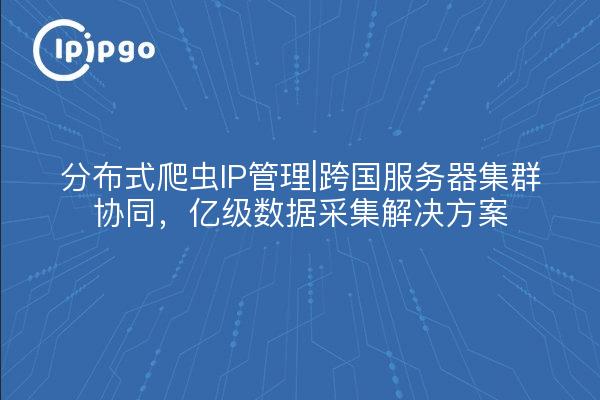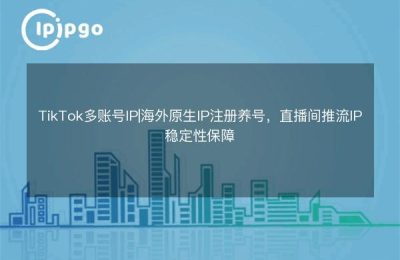
Distributed Crawler Predicament in Real Scenarios
Engineers who have done data collection have encountered such a situation: the crawlers deployed in Tokyo suddenly failed en masse, the success rate of server requests in Frankfurt fell off a cliff, and the machines in São Paulo could not catch data even though they were clearly configured properly. This is not a code problem, butFatal flaws of traditional IP policies in distributed scenarios-When multiple crawler nodes use the same IP segment, it is easy to be recognized as bot behavior by the target website.
How Proxy IP Breaks the Distributed Conundrum
A truly distributed architecture must realizeDual decentralization of physical nodes and IP resourcesWe have deployed server clusters in Los Angeles, Singapore, and Berlin. Our server clusters in Los Angeles, Singapore, and Berlin are deployed through ipipgo's global pool of residential IPs, enabling true "distributed stealth":
| shore | Original IP type | current IP address | Success rate of requests |
|---|---|---|---|
| North American Node | Server Room IP | Dynamic Residential IP | 89%→97% |
| Southeast Asia node | single proxy IP | Residential IP Rotation | 72%→96% |
| European node | Self-built agent pool | Static Residential IP | 68%→94% |
ipipgo's Residential IP Resource Pool contains 90 million+ real home network addresses and is especially suited for those who need toSimulate the behavior of a real person's visitscenarios. Its automatic dynamic IP switching mechanism ensures that each crawler node carries a different network fingerprint when requesting.
Transnational Cluster Collaboration Practical Program
When data collection requires collaboration across time zones and geographic regions, we have developed an intelligent scheduling system:
1. Real-time access to available IPs in each region through ipipgo's APIs
2. According to the target site's anti-crawl strategy to automatically match the IP type
3. Monitoring system dynamically adjusts IP usage density
4. Automatic switching of alternate IP pools for abnormal requests
This solution successfully helped a cross-border e-commerce platform to realize 7×24-hour uninterrupted price monitoring, and the average daily processing request volume was increased from 5 million to 230 million times, and theEffective blocking rate controlled below 0.3%The
Key Parameter Configuration Manual
Proxy IP configuration strategies for different scenarios (based on the ipipgo feature):
| take | IP Type | Switching frequency | Concurrent control |
|---|---|---|---|
| commodity price comparison | Dynamic Residential IP | Switching per request | ≤5 requests/second |
| Public Opinion Monitoring | Static Residential IP | change daily | ≤3 requests/second |
| Inventory monitoring | Server Room IP | Hourly switching | ≤10 requests/second |
Solutions to Common Problems
Q: How to deal with sudden mass IP blocking situation?
A: Immediately enable the emergency switching mode of ipipgo, which can automatically call the backup IP pool, while temporarily reducing the request frequency, and gradually recover after the system is stabilized.
Q: How does transnational collection ensure the timeliness of data?
A: Adopt regionalized deployment strategy, for example, when monitoring US e-commerce data, directly call ipipgo's North American residential IP to avoid transnational network delays affecting collection efficiency.
Q: How to verify the actual effect of proxy IP?
A: ipipgo provides real-time quality monitoring panel to view the success rate, response time and other core indicators of each IP, and supports filtering the optimal IP segments by country/city.
In practice, it has been found that the judicious use of ipipgo'sIP Quality Scoring SystemIt can improve the collection efficiency of 20% or more. Its unique residential IP verification mechanism ensures that every IP comes from a real home broadband network, which is a key weapon against modern anti-climbing systems.








